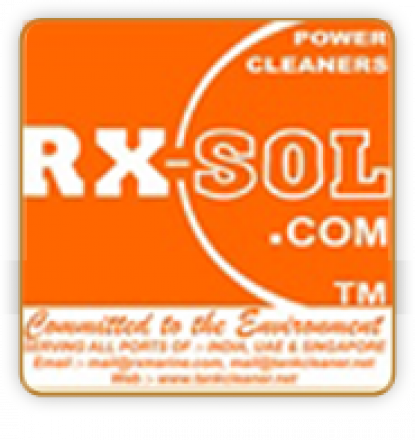Buffer Cleaner
Oman Chemical is leading one Largest Supplier, Manufacture a

A water like clear & colorless liquid.An aqueous equilibrium solution containing peracetic acid, Hydrogen peroxide, acetic acid and special stabilizers. This product is considered environmentally safe since it decomposes to acetic acid and oxygen. Acetic acid is completely biodegradeable.
Sanitizer in breweries, beverage, juices, food processing and equipment : meat, bakery, poultry, sea food and disinfection in hospital (facility sanitization)
| Characteristics | Unit | Specifications | Test Method |
| Peracetic acid | %w/w | 40 min | TPL QCWK-6002 |
| H2O2 | %w/w | 6-8 | TPL QCWK-6001 |
| Active Oxygen | %w/w | 8 min | TPL QCWK-6003 |
| Acetic acid | %w/w | 32min | TPL QCWK-6004 |
| pH of 1% solution | - | 3.0 max | TPL QCWK-1002 |
| Sp.Gravity @25 + 1๐ C | - | 1.10 min | TPL QCWK-1009 |
| Color | H.U | 15 max | TPL QCWK-1008 |
| Appearance | - | Clear | TPL QCWK-1008 |
Peracetic acid is a strong disinfectant with a wide spectrum of antimicrobial activity. Due to its bactericidal, virucidal, fungicidal, and sporicidal effectiveness as demonstrated in various industries, the use of peracetic acid as a disinfectant for wastewater effluents has been drawing more attention in recent years. The desirable attributes of peracetic acid for wastewater disinfection are the ease of implementing treatment (without the need for expensive capital investment), broad spectrum of activity even in the presence of heterogeneous organic matter, absence of persistent toxic or mutagenic residuals or by-products, no quenching requirement (i.e., no dechlorination), small dependence on pH, short contact time, and effectiveness for primary and secondary effluents. Major disadvantages associated with peracetic acid disinfection are the increases of organic content in the effluent due to acetic acid (AA) and thus in the potential microbial regrowth (acetic acid is already present in the mixture and is also formed after peracetic acid decomposition). Another drawback to the use of peracetic acid is its high cost, which is partly due to limited production capacity worldwide. However, if the demand for peracetic acid increases, especially from the wastewater industry, the future mass production capacity might also be increased, thus lowering the cost. In such a case, in addition to having environmental advantages, peracetic acid may also become cost-competitive with chlorine.
PerAcetic Acid Handling Precaution :
Tip 1. Store in a well-ventilated area.
Tip 2. Keep at temperatures not exceeding 42 Degreee C.
Tip 3. Protect from direct sunlight.
Tip 4. Keep away from heat and sources of ignition such as steam pipes, radiant heaters, hot air vents, or welding sparks.
Tip 5. Do not store on wooden pallets.
Tip 6. Keep containers tightly closed.
Tip 7. Avoid damage to containers. There is a risk of container decomposition by heat or by contact with incompatible materials. In case of decomposition, isolate the container, douse with cool water and dilute with large volumes of water.
Tip 8. Store containers of peracetic acid at least 5 meters (16 feet 5 inches) or by a 4-hour fire-resistant wall from oxidizing agents or corrosives.
Tip 9. Do not store containers of peracetic acid in the same space flammable gases, liquids or solids, compressed or poisonous gases, spontaneous combustibles, dangerous when wet materials, poisons, or radioactive materials.
Tip 10. Empty drums as thoroughly as possible and triple rinse drums before disposal.
Peracetic acid uses.
Workplaces where peracetic acid is used include:
· Meat and poultry processing plants
· Dairy and cheese processing plants
· Healthcare facilities
· Food establishments
· Beverage plants, including breweries and wineries
· Paper and pulp facilities
· Water treatment facilities
· Cooling water towers
The National Institute for Occupational Safety and Health (NIOSH) is in the process of evaluating whether to develop an immediately dangerous to life or health (IDLH) value for peracetic acid. Note: An IDLH value is the maximum (airborne concentration) level above which only a highly reliable breathing apparatus providing maximum worker protection is permitted.
According to NIOSH’s draft IDLH value profile an IDLH value of 1.7 milligrams per cubic meter (mg/m3) over 30 minutes is recommended for peracetic acid
Peracetic Acid supplier in Mumbai, Muscat, Chennai, Kolkata, Fujairah, Ajman, Abudhabi, Sharjah, Dubai, UAE, Ruwi, Barka, Muscat Oman, Sohar, Surat, Ganhidham, Visakhapatnam, Nairobi, Kenya, Sudan, Yemen, Africa